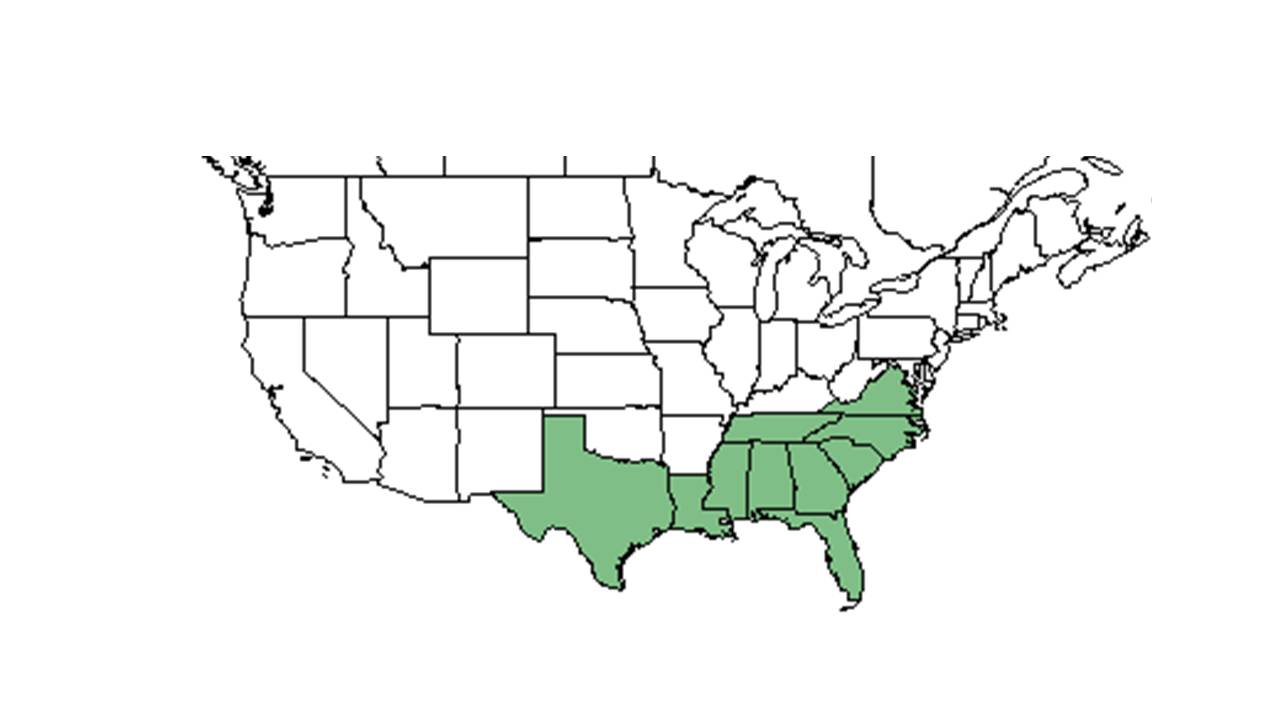Difference between revisions of "Dichanthelium strigosum"
Ruthstetler (talk | contribs) (→Description) |
Ruthstetler (talk | contribs) (→References and notes) |
||
| Line 42: | Line 42: | ||
==Photo Gallery== | ==Photo Gallery== | ||
==References and notes== | ==References and notes== | ||
| + | Florida State University Robert K. Godfrey Herbarium database. URL: [http://herbarium.bio.fsu.edu http://herbarium.bio.fsu.edu]. Last accessed: June 2014. | ||
| + | |||
| + | Collectors: Cecil R. Slaughter, Loran C. Anderson, S. W. Leonard, A. E. Radford, H. L. Blomquist, D. S. Correll, Wm. G. Atwater, Robert Kral, O. Lakela, R. Komarek, K. E. Blum, R.K. Godfrey, Ed Tyson, A. F. Clewell, Annie Schmidt, Wilson Baker, Richard W. Pohl, Frank W. Gould, and H. Kurz. | ||
| + | |||
| + | States and Counties: Alabama: Convington. Florida: Bay, Brevard, Dade, Escambia, Franklin, Hillsborough, Indian River, Jefferson, Lafayette, Lee, Leon, Madison, Nassau, Okaloosa, Polk, Wakulla, and Washington. Georgia : Baker and Thomas. North Carolina: Brunswick. South Carolina: Greenwood and Jasper. | ||
| + | Other Countries: Panama (United States of America). | ||
Revision as of 19:05, 13 July 2015
| Dichanthelium strigosum | |
|---|---|

| |
| Scientific classification | |
| Kingdom: | Plantae |
| Division: | Magnoliophyta - Flowering plants |
| Class: | Liliopsida – Monocotyledons |
| Order: | Cyperales |
| Family: | Poaceae ⁄ Gramineae |
| Genus: | Dichanthelium |
| Species: | D. strigosum |
| Binomial name | |
| Dichanthelium strigosum (Muhl. ex Elliott) Freckmann | |

| |
| Natural range of Dichanthelium strigosum from USDA NRCS Plants Database. | |
Contents
Description
Common Name: roughhair rosette grass
Synonym Name: Panicum strigosum Muhl. ex Elliott
Dichanthelium strigosum is a perennial graminoid theat tends to grow in thick mats (FSU Herbarium).
Distribution
Ecology
Habitat
It can be found in relatively undisturbed areas.[1] It can be found in longleaf pine savannas.[2]
Phenology
Seed dispersal
It is dispersed by gravity.[3]
Seed bank and germination
Fire ecology
It can tolerate biennial, early growing season prescribed fires.[2]
Pollination
Use by animals
Diseases and parasites
Conservation and Management
Cultivation and restoration
Photo Gallery
References and notes
Florida State University Robert K. Godfrey Herbarium database. URL: http://herbarium.bio.fsu.edu. Last accessed: June 2014.
Collectors: Cecil R. Slaughter, Loran C. Anderson, S. W. Leonard, A. E. Radford, H. L. Blomquist, D. S. Correll, Wm. G. Atwater, Robert Kral, O. Lakela, R. Komarek, K. E. Blum, R.K. Godfrey, Ed Tyson, A. F. Clewell, Annie Schmidt, Wilson Baker, Richard W. Pohl, Frank W. Gould, and H. Kurz.
States and Counties: Alabama: Convington. Florida: Bay, Brevard, Dade, Escambia, Franklin, Hillsborough, Indian River, Jefferson, Lafayette, Lee, Leon, Madison, Nassau, Okaloosa, Polk, Wakulla, and Washington. Georgia : Baker and Thomas. North Carolina: Brunswick. South Carolina: Greenwood and Jasper.
Other Countries: Panama (United States of America).
- ↑ Thaxton, J. M. (2003). Effects of fire intensity on groundcover shrubs in a frequently burned longleaf pine savanna. Ann Arbor, MI, Louisiana State University and Agricultural & Mechanical College. Ph.D.: 146. Kirkman, L. K., K. L. Coffey, et al. (2004). "Ground cover recovery patterns and life-history traits: implications for restoration obstacles and opportunities in a species-rich savanna." Journal of Ecology 92(3): 409-421.
- ↑ 2.0 2.1 Thaxton, J. M. (2003). Effects of fire intensity on groundcover shrubs in a frequently burned longleaf pine savanna. Ann Arbor, MI, Louisiana State University and Agricultural & Mechanical College. Ph.D.: 146.
- ↑ Kirkman, L. K., K. L. Coffey, et al. (2004). "Ground cover recovery patterns and life-history traits: implications for restoration obstacles and opportunities in a species-rich savanna." Journal of Ecology 92(3): 409-421.